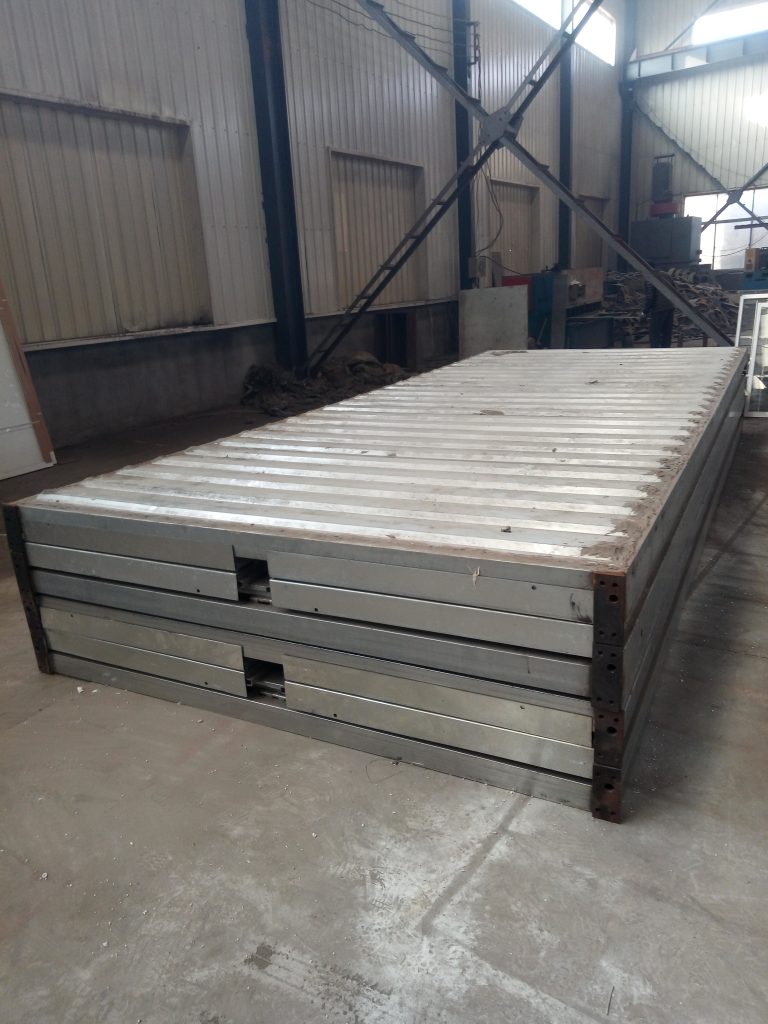Seismic ground subsidence resistance design of steel structure
Inhoudsopgave
Importance of Seismic Ground Subsidence Resistance Design in Steel Structures
Seismic ground subsidence resistance design is a critical aspect of ensuring the safety and stability of steel structures in earthquake-prone regions. The importance of this design cannot be overstated, as ground subsidence can lead to significant structural damage and even collapse in the event of an earthquake. By incorporating seismic ground subsidence resistance design into the construction of steel structures, engineers can mitigate the risks associated with ground movement and ensure the longevity and durability of the building.
One of the key factors to consider in seismic ground subsidence resistance design is the selection of appropriate materials and construction techniques. Steel structures are inherently flexible and can withstand a certain degree of ground movement, but they must be designed and built to withstand the forces exerted by an earthquake. This requires careful planning and consideration of factors such as soil conditions, building height, and seismic activity in the region.
In addition to selecting the right materials and construction techniques, engineers must also consider the layout and configuration of the steel structure. By designing the building with a focus on seismic ground subsidence resistance, engineers can ensure that the structure is able to withstand the lateral forces generated by ground movement during an earthquake. This may involve incorporating features such as bracing systems, shear walls, and moment-resisting frames to enhance the building’s stability and resilience.
Another important aspect of seismic ground subsidence resistance design is the use of advanced modeling and analysis techniques. By simulating the effects of ground movement on the steel structure, engineers can identify potential weak points and vulnerabilities in the design and make necessary adjustments to improve the building’s overall performance. This may involve conducting dynamic analysis, pushover analysis, and other advanced modeling techniques to assess the structure’s response to seismic forces and optimize its design for maximum safety and stability.
Furthermore, engineers must also consider the impact of ground subsidence on the foundation of the steel structure. In regions with high seismic activity, the ground may shift and settle during an earthquake, putting additional stress on the foundation and potentially compromising the integrity of the building. By designing the foundation with seismic ground subsidence resistance in mind, engineers can ensure that it is able to withstand the forces exerted by ground movement and provide a stable base for the steel structure.

Overall, seismic ground subsidence resistance design is a critical aspect of ensuring the safety and stability of steel structures in earthquake-prone regions. By incorporating this design into the construction of steel buildings, engineers can mitigate the risks associated with ground movement and enhance the building’s resilience to seismic forces. Through careful planning, selection of materials, layout and configuration, advanced modeling and analysis, and consideration of foundation design, engineers can create steel structures that are able to withstand the forces of nature and provide a safe and secure environment for occupants.
Best Practices for Ensuring Seismic Ground Subsidence Resistance in Steel Structure Design
Seismic ground subsidence poses a significant threat to the stability and safety of steel structures. In regions prone to earthquakes, it is crucial to implement proper design techniques to ensure the resistance of steel structures to ground subsidence. By following best practices in seismic ground subsidence resistance design, engineers can mitigate the risks associated with this natural phenomenon.
One of the key considerations in designing steel structures for seismic ground subsidence resistance is the selection of appropriate materials. High-strength steel with good ductility is essential for withstanding the forces exerted during an earthquake. The use of high-quality steel can help prevent structural failure and ensure the overall stability of the building.
In addition to selecting the right materials, engineers must also pay close attention to the design of the steel structure. Proper detailing and reinforcement of critical components, such as beams and columns, are essential for enhancing the structure’s ability to withstand ground subsidence. By incorporating seismic design principles, such as ductility and redundancy, engineers can improve the overall performance of the steel structure during an earthquake.
Furthermore, the foundation of the steel structure plays a crucial role in its resistance to seismic ground subsidence. A well-designed foundation can help distribute the forces exerted during an earthquake and prevent excessive settlement or tilting of the structure. Engineers must consider factors such as soil type, site conditions, and seismic activity when designing the foundation to ensure its stability and durability.
Another important aspect of seismic ground subsidence resistance design is the use of proper connections and joints in the steel structure. Welded connections are commonly used in steel construction, but they can be vulnerable to failure during an earthquake. Engineers must carefully design and detail the connections to ensure their strength and ductility under seismic loading. Additionally, the use of moment-resisting frames and bracing systems can help improve the overall stability of the steel structure and reduce the risk of collapse.
Incorporating advanced analytical techniques, such as finite element analysis and computer simulations, can also help engineers optimize the design of steel structures for seismic ground subsidence resistance. These tools allow engineers to model the behavior of the structure under different loading conditions and identify potential weaknesses that need to be addressed. By conducting thorough analyses and testing, engineers can ensure the structural integrity and safety of the steel structure in the event of an earthquake.
Overall, ensuring seismic ground subsidence resistance in steel structure design requires a comprehensive approach that considers all aspects of the building’s construction. By selecting the right materials, designing the structure with seismic principles in mind, and paying attention to critical details such as connections and foundations, engineers can enhance the overall performance and safety of steel structures in earthquake-prone regions. By following best practices in seismic ground subsidence resistance design, engineers can help protect lives and property during seismic events.







